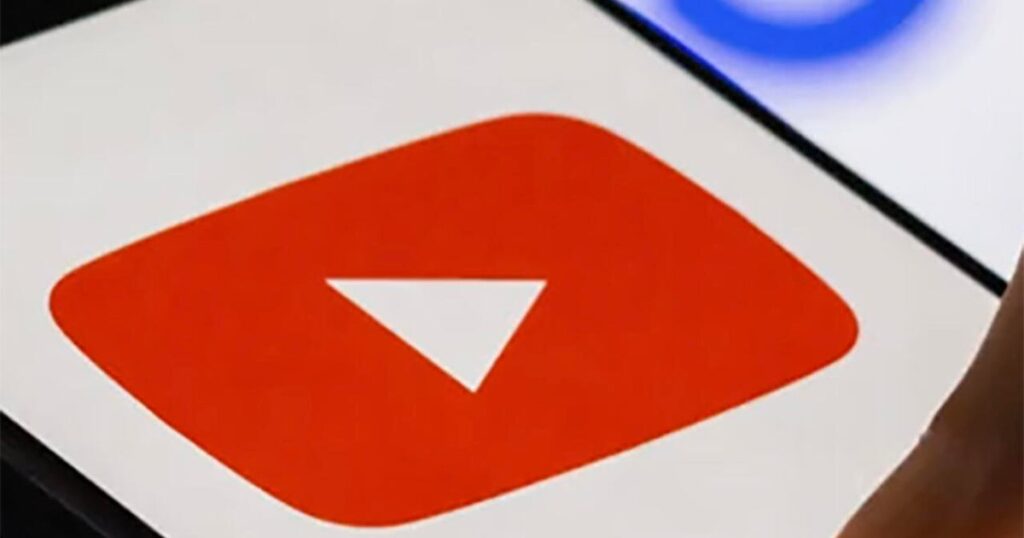Two decades ago this week, Jawed Karim, a co-founder of YouTube, uploaded the very first video titled “Me at the Zoo.”
“Okay. Here we are in front of the elephants. What’s amazing about them is their really, really long trunks. And that’s it!”
YouTube was so novel that in 2006, Charles Osgood explained it to “Sunday Morning” viewers: “A platform where almost anyone can share videos with the world.”
Today, no explanation is needed. YouTube ranks as the second most-visited site worldwide, trailing only Google, which acquired YouTube for $1.65 billion in 2006.
Daily, we collectively spend over a billion hours watching videos on YouTube, including comedy clips, tutorials, and cat videos. Over these 20 years, we’ve uploaded an astonishing 20 billion videos to the platform.
The all-time most-viewed video? “Baby Shark Dance,” boasting around 16 billion views.
And viewers are not just tuning in on their mobile devices. “People now prefer watching YouTube over any other streaming service on their TVs,” says David Craig, a media and culture professor at the University of Southern California.
Craig notes a pivotal moment was when YouTube began compensating creators for their content. “YouTube offered to share advertising revenues, acknowledging that creators were crucial to its growth,” he explained.
Currently, the platform roughly divides ad revenue with creators, as Craig mentioned: “The split may vary for the more prominent creators, who need to be satisfied with the platform.”
Notable creators include Rhett McLaughlin and Link Neal, who host a daily series called “Good Mythical Morning,” attracting 34 million subscribers and accumulating 14 billion views.
McLaughlin explained their show’s charm: “It’s like two old friends hanging out, and you can be the third friend in that conversation. We’ve found a secret formula that keeps viewers coming back every day.”
While they may film in a traditional studio, what sets YouTube apart from TV? “I’d say it’s our talent,” Neal joked.
“A significant part is engaging with the audience,” McLaughlin added. “There are comments, which allow us to connect with viewers.”
Craig remarked, “YouTube creators aren’t merely content producers; they are for-profit community organizers, using the platform to foster communities and develop various business models.”
For McLaughlin and Neal, these business ventures could range from tours and books to apparel like sweatshirts and pins. “If we’re investing time in our hair, we might as well monetize it!” Neal noted.
No one has capitalized on this better than Jimmy Donaldson, known as MrBeast, whose colossal giveaway and challenge videos have earned him the title of the most-followed YouTuber, with 380 million fans.
Last year, Amazon Prime invested $100 million to create a game show featuring MrBeast.
I asked David Craig, “Is becoming a YouTube star now seen as a bigger goal than being a TV star?”
“Sadly, that has been true for over a decade,” Craig responded. “Surveys of young people show that they aspire to be a creator or influencer more than a celebrity – or, dare I say, a journalist.”
From the archives: The early days of YouTube
McLaughlin and Neal believe the advertising sector has yet to fully grasp YouTube’s influence. “If you examine the 18-to-34 demographic, we outshine all late-night shows combined,” Neal noted. “Yet, comparing revenue, it doesn’t match the recognition we think we deserve.”
“This is one of the reasons we’re eager to win an Emmy,” McLaughlin added. “We’re part of the cultural dialogue, comparable to many Emmy-winning shows.”
Throughout its two-decade journey, YouTube has faced various controversies, including issues regarding children’s personal information, and claims about its role in a mental health crisis.
Critics are also concerned about YouTube’s algorithm, which analyzes user engagement and promotes similar content, leading to accusations that it fuels extreme viewpoints.
“We have an immense variety of perspectives on our platform,” stated YouTube CEO Neal Mohan. “We prohibit adult content, and we have clear policies against spam and fraud, as well as safeguards for young people.”
and children on the platform. Ultimately, it serves as a platform for free expression.
As YouTube approaches its 20th anniversary, what can we expect in the coming years? Mohan expressed excitement about the potential of artificial intelligence. “Imagine creating a video and telling YouTube, ‘Place us in Central Park, change the background, and include these types of birds because it’s spring.’ This remarkable technology is already a reality,” he stated.
When I inquired, “Is there a psychological or evolutionary reason behind our fascination with watching others?”
Mohan responded, “It stems from our nature as social creatures. We thrive on connecting with one another. We are natural storytellers. This is what transpires billions of times daily on YouTube. It ties back to our mission: giving everyone a voice and showcasing the world.”
“It’s a double rainbow all the way!”
For more details:
Story created by David Rothman. Edited by Jason Schmidt.
Related Content:


